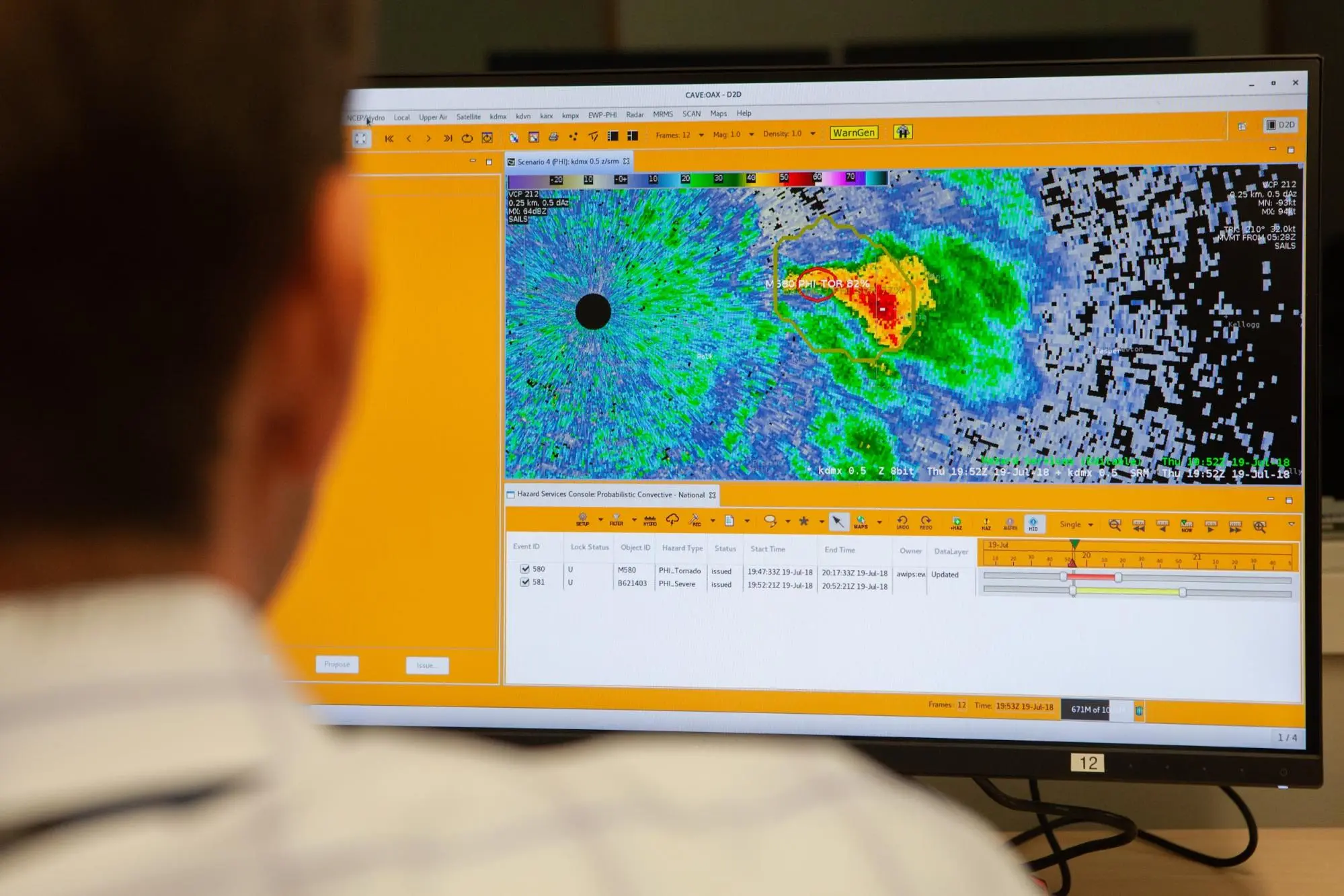A new hazardous weather warning system proves its mettle during March tornado outbreaks

From March 13 to 16, 2025, a historic and deadly tornado outbreak swept across the central United States, unleashing severe weather from the Gulf Coast to central Illinois. The storm system produced more than 115 confirmed tornadoes, and resulted in $6.25 billion in damage and 23 fatalities, making it one of the largest on record for the month of March.
.webp)
A new hazardous weather warning application developed by NOAA’s Global Systems Laboratory helped National Weather Service forecasters provide faster tornado and severe storm warnings during a severe weather outbreak in March. Credit: NOAA National Weather Service
In Missouri, the Saint Louis National Weather Service (NWS) forecast office found itself at the heart of the storm. Over four days, forecasters issued 20 tornado warnings and 30 severe storm warnings in eastern Missouri and southwestern Illinois, making it one of the most active outbreaks on record for the St. Louis area. Two tornadoes were rated EF-3, with peak wind speeds in excess of 150 mph. Only one injury and no fatalities were reported in the St. Louis forecast area.
By any measure this was a challenging system to forecast, but issuing life-saving warnings during this extended period of severe weather was made faster and easier by a new tool called Hazard Services Convective, developed by NOAA’s Global Systems Laboratory (GSL) in Boulder, Colorado.
“Using Hazard Services is more intuitive, which allows my forecasters to issue warnings more rapidly, as well as giving them the ability to monitor and create multiple warnings simultaneously,” said Ben Herzog, the NWS Science and Operations Officer in the St. Louis forecast office.
Hazard Services Convective is one member of a suite of Hazard Services applications that began rolling into NWS operations in 2019. The suite consists of applications for several different weather and water hazards, and the “Convective” application addresses the hazards associated with thunderstorms, such as hail, tornadoes, and wind. The term “convective” refers to the vertical transport of heat and moisture in the atmosphere, especially by updrafts and downdrafts in an unstable atmosphere. The new software improves storm tracking and allows forecasters to issue, update or adjust warnings of thunderstorm-related threats faster and more effectively.

A National Weather Service forecaster uses Hazard Services to issue a warning during a Hazardous Weather Testbed evaluation in Norman, Oklahoma. Credit: NOAA National Severe Storms Laboratory
In 2024, NWS Pittsburgh became the first office to issue a convective warning using the Hazard Services software. During testing, one Pittsburgh forecaster said that with practice, the system let him cut the time from deciding to issue a warning to issuing the warning from half a minute to 10 seconds.
The March 14, 2025, event represented the first widespread tornado outbreak that included tornado warnings issued using Hazard Services.
GSL’s project lead Nate Hardin said Hazard Services applications for winter weather, flooding, dust, heat and wind products have already been made available to all Weather Forecast Offices. Other applications including marine gale warnings and high seas hazards, storm surge, fire weather and in-flight aviation hazards, such as turbulence, wind shear and icing, are under development. Each is built around a common interface to minimize the amount of training needed for handling different types of weather events.
“Hazard Services represents the next generation in warning alerts, and ensures that the general public and economic sectors from commercial aviation and open ocean shipping receive fast, accurate warnings about tornadoes, hail and flooding and everything in between,” Hardin said. “It’s grown from a concept to a critical piece of software that’s used daily across our country to fulfill NOAA's mission of saving lives, protecting property, and supporting our national economy.”
